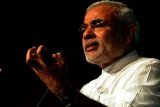Quantitative easing: Is too much money too bad?
This was swiftly followed by US Federal Reserve's open ended QE3 (quantitative easing) announcement last week through which the central bank would buy $40bn (£25.6bn) a month in mortgage backed securities until the economy recovers.
BOJ's decision to opt for easy money policy was not just to give impetus to ailing economy but also to stop yen from appreciating any further and help protect country's exporters. It is highly likely that the Bank of England too would soon unveil additional measures to stimulate growth in Britain’s ailing economy.
The ultimate goal of intervention by central banks is to be able to influence prices and returns on financial assets. It also aims to boost the economy with an impact on businesses by lowering borrowing costs and encouraging households to spend more.
Inflation and asset-price bubble (triggered by easing) are concerns but global economy that is on life-support currently is a much bigger concern. Concerted efforts by major central banks increase the potency and this time around we may see demand getting spurred. Investors and financial markets across the globe have been exuberant and they expect central banks' actions to play out for considerably long period.
What is quantitative easing?
Central bank plays an active role in the economic and financial functioning of its country through monetary tools. Most widely used tool is setting short-term interest rates in order to influence economic trends. As we all know, low-rate policy is prescribed when growth needs to be stimulated and interest rates are set higher when inflation needs to be contained.
More like this
Growth is the need of the hour; however, Federal Reserve for one has set the interest rate close to zero (for some time now) leaving no room for further reduction to boost growth. The next available option is to pump more cash into the system. This cash is intended to buy bonds and financial assets from banks, leaving the banks liquid so they in turn justify their existence by continuing to lend to businesses. Business expansion is expected to result in increased employment opportunities and everyone lives happily ever after; well, at least in an ideal world.
How easy money elsewhere is affecting India? Since last week, amid flurry of freebies from central banks, Indian equities and Rupee have been beneficiaries. Investors are flocking to countries and assets which promise more attractive returns than rock-bottom rates offered by the US, Eurozone and Japan. Now with the promise of printing money to infinity (well, close to it), there is more cash (likely) chasing Indian and other emerging market assets.
This hot money would push our central bank to review its monetary policy in order to:
- Keep inflation at bay which is an immediate concern; and
- Fight against untoward rupee appreciation (as and when).
Will the easy money push inflation up in US and Eurozone without any positive impact on demand and output? Once the factory activity is in full swing and unemployment is under an acceptable level, it is more likely that (continued) monetary stimulus could prove to be inflationary. It looks like we are quite a few quarters (if not years) away to get there.
Until then though, too much money doesn't seem too bad, honey!
Kamala Aithal is the founder of a consulting firm that assists corporates develop Risk Management Framework and a regular contributor to Wisonomics column. The views and opinions expressed in this article are those of the author and does not reflect the views or position of IndiaNewsBulletin.com.
Most read
- 2017: Full list of Indian States, capitals and their Chief Ministers
- As the venerated former President APJ Abdul Kalam passes away, here's a list of all Presidents of India
- List of all the major rivers of India: Names, Origin and Length
- Indian cabinet 2017: Full list of Ministers and their portfolios in Narendra Modi government
- Dosa recipe: How to make crispy Paper Dosa and Masala Dosa
- Recipe: Misal Pav – how to make missal masala, usal and tarri
- Watch Delhi bride Amisha Bhardwaj’s funky wedding dance video that is now globally viral
- Commonwealth Games 2014: Full list of Indian gold, silver and bronze medal winners
- SIIMA Awards 2015 Red Carpet Pics: Trisha, Shruti Hassan, Amy Jackson, Rana Daggubati, Hansika dazzle
- Bollywood Dream Team 2016: Katrina, Alia, Sidharth, Varun, Parineeti, Aditya Roy Kapur US tour in August
India News Bulletin by email
More Lead Stories
- London Grenfell Tower Fire – Key facts and pics
- Cannes 2017 Photos: Bollywood’s Deepika Padukone, Aishwarya Ra Bachchan Impress
- Sizzling Deepika Padukone’s special appearance in Raabta title song trends even before release
- Finally! The official trailer of Sachin - A Billion Dreams, on India’s beloved Master Blaster
- Parineeti Chopra’s debut song in Meri Pyaari Bindu shows how multi-talented she is!













